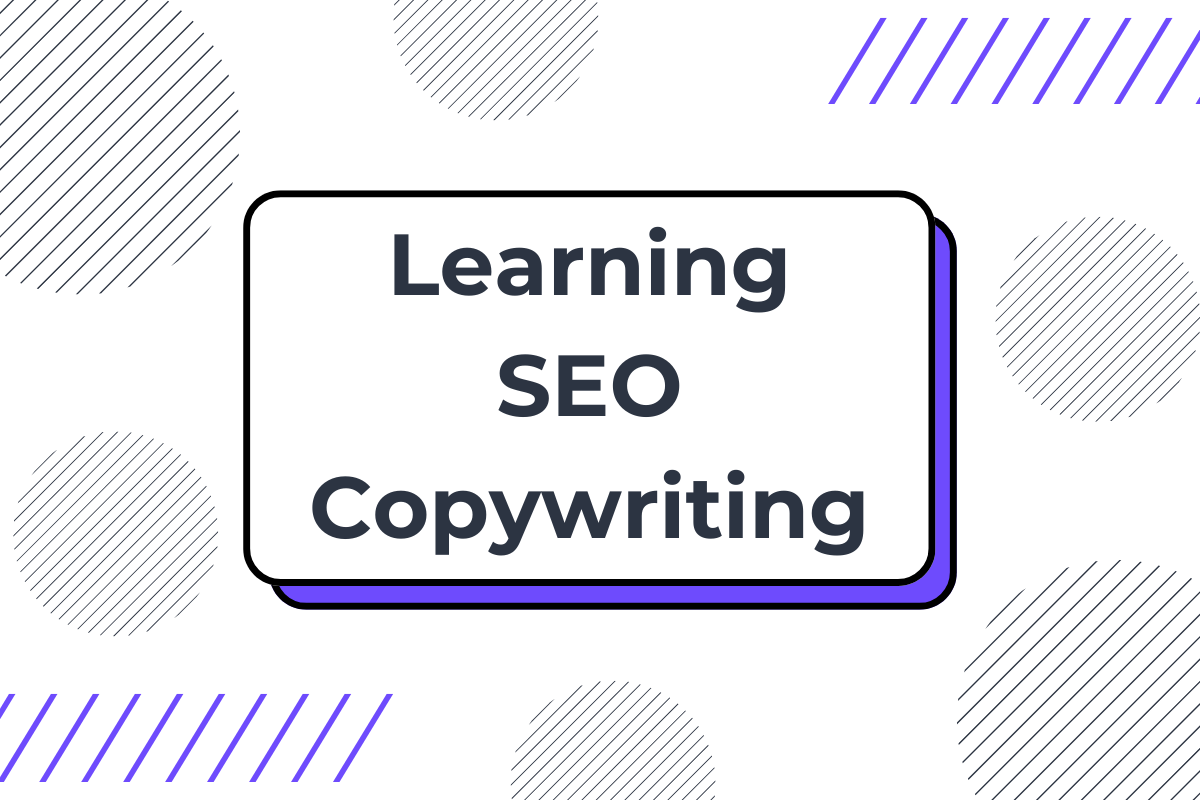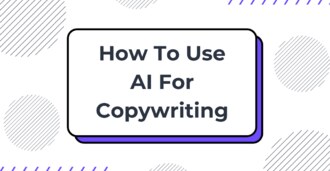How Long Does It Take To Learn SEO Copywriting? (Fastest Way)

You want to learn SEO Copywriting.
But not sure how long it will exactly take to learn?
Weeks? Months? Or… Years?
Well, don’t worry. It’s not nearly as complicated as you might think.
The truth is, your learning timeline depends on your starting point.
A complete beginner might need 3-5 months to get all the basics down.
But if you already know a little bit of copywriting and SEO? You could start working with clients in just 1-2 months.
Here’s a quick overview of what you can expect:
| SEO Copywriting Level | Timeline | What You'll Learn |
|---|---|---|
| Beginner | 2-4 weeks | Basic SEO principles, headline writing, keyword research |
| Intermediate | 2-3 months | Content optimization, meta descriptions, user intent |
| Advanced | 4-6 months | Technical SEO, content strategy, conversion optimization |
In this guide, you’ll find a complete breakdown of the common factors that affect your SEO copywriting learning timeline and tips on how you can speed up your learning process. You’ll also learn about some common mistakes you should avoid to learn copywriting fast.
Ready to explore more? Let’s dive in!
What Is SEO Copywriting?
SEO copywriting combines two key skills: writing content that readers enjoy to read and optimizing it for search engines. Think of it as writing that sells, ranks, and converts—all at the same time.
You'll write different types of content as an SEO copywriter.
Blog posts pay around $150-300 each. Product descriptions can fetch $50-100 per page. Landing pages? Those can earn you $300-500 or more. Each type needs specific optimization techniques to rank well on Google.
The goal is simple: create content that shows up when people search for answers. But it's not just about adding SEO keywords everywhere. Modern SEO copywriting focuses on solving problems.
You research what people ask on Google, then write clear, helpful answers that both Google and readers will love.
Here's what makes SEO copywriting different from regular writing:
-
You pick topics based on keyword research
-
You format content for easy online reading
-
You optimize headlines for both clicks and rankings
-
You structure content that’s optimized for search engines as well as readers
-
You use data to further enhance your writing
Real SEO copywriting looks natural. Readers won't notice the optimization work behind the scenes. They'll just find exactly what they're looking for, written in a way that's easy to understand and act on.
Now that you know what SEO Copywriting is, let’s explore why it’s worth your time and effort.
Why Learn SEO Copywriting?
Now, let's talk about why it’s worth it to learn SEO copywriting.
First things first: it has a constant demand.
Every business needs a website. Every website needs content. And all that content needs to rank on Google. This constant demand means steady work.
The earning potential is good too. Entry-level SEO copywriters start at decent rates—typically around $50-100 per article. Get some experience, and you can charge $200-500 per piece. The best part? Most SEO Copywriting jobs are remote, so you can write from anywhere.
But here's what makes SEO copywriting special: It is growing even after AI tools came into the field.
Now yes, AI tools exist. But they've actually made SEO copywriters more valuable.
Why? Because now everyone can create basic content. The demand for high-quality, strategic content that stands out has gone up. Clients need writers who understand SEO strategy, and know how to create content that actually converts readers into customers.
The learning curve is manageable too. You don't need special degrees or certifications. Focus on these core skills:
-
Understanding what readers want
-
Writing clear, helpful content
-
Basic keyword research
-
Content optimization
But like any other field, SEO copywriting also has its challenges:
-
Results take time to show up
-
Google's rules keep changing
-
Competition can be tough
-
You need to stay updated with trends
Still, compared to other writing careers, SEO copywriting offers more stability, better pay, and clearer paths to success. Plus, the skills you learn are transferable to content strategy, digital marketing, and even running your own online business.
Now, let’s see exactly how long it takes to learn SEO Copywriting.
The Complete SEO Copywriting Learning Timeline
Here’s what you can expect as you start learning SEO Copywriting:
Beginner Level (2-4 Weeks)
Your first month focuses on the basics. You'll start with core SEO concepts like title tags, meta descriptions, and header tags. Most beginners spend about 2 hours daily learning these fundamentals.
Your daily schedule might look like this:
-
Morning: Learn one SEO concept (30 minutes)
-
Afternoon: Practice writing headlines (30 minutes)
-
Evening: Write a short blog post (1 hour)
By week 4, you should know how to:
-
Write clear, engaging headlines that include keywords
-
Create meta descriptions that get clicks
-
Structure content with proper H1, H2, and H3 tags
-
Write introductions that keep readers on the page
Intermediate Level (2-3 Months)
This is where you'll dive deeper into keyword research and content optimization.
Your key milestones will include:
-
Finding keywords with good search volume (1000+ monthly searches)
-
Writing content that targets specific user intent
-
Creating content clusters around main topics
-
Optimizing old content to improve rankings
By month 3, you should be able to:
-
Write articles that rank for specific keywords
-
Create content briefs for any topic
-
Optimize existing content for better performance
-
Use internal linking to boost SEO value
Advanced Level (6+ Months)
Now, you’ll start focusing on advanced strategy and technical SEO writing. At this stage, you'll learn to:
-
Create complete content strategies for websites
-
Write content that converts (3-5% conversion rate is standard)
-
Develop your own writing style that ranks
-
Specialize in specific industries
The advanced stage is where most writers start seeing $500+ per article. You'll understand how to:
-
Write content that ranks for multiple keywords
-
Create pillar pages that bring consistent traffic
-
Develop content that attracts backlinks naturally
-
Build authority in specific niches
While this timeline helps you know exactly what to expect while learning SEO copywriting, your learning journey might still be different as there are many factors that affect your learning speed.
5 Factors That Affect Your Learning Speed
Let's look at the top 5 factors that will affect how quickly you can master this skill.
1. Previous Writing Experience
On average, this is the learning speed you can expect based on different writing experience level:
-
Professional writers can learn SEO copywriting in 4-6 weeks
-
Bloggers or content creators typically need 6-8 weeks
-
Complete beginners should plan for 10-12 weeks
Pro Tip: If you're new to writing, start with a daily 500 or 1000 words practice routine. You'll cut your learning time by half as you keep applying your learnings into the actual writing process regularly.
2. Time Commitment
Your daily schedule shapes your progress. Here's what works best:
-
Full-time focus (6+ hours daily): Master the basics in 2-3 weeks
-
Part-time (2-3 hours daily): Expect 4-6 weeks for the basics
-
Side hustle (1 hour daily): Plan for 8-10 weeks
The sweet spot? 2 hours per day. This gives you enough time to learn and practice without burning out.
3. Learning Method
Your choice of learning path affects your timeline:
-
Structured courses: Cut learning time by almost half
-
Self-taught: Takes longer but costs less
-
Mentorship: The fastest method. Significantly speeds up the learning process but costs more
The fastest route combines online courses with real practice.
4. Practice Opportunities
Real projects speed up your learning. Here's how to get them:
-
Start a personal blog (fastest way to practice)
-
Write for small businesses (often free, but great experience)
-
Join content agencies (steady work, structured feedback)
5. Tools And Resources
The right tools make a huge difference:
-
AI writing assistants: Cut writing time by half
-
Keyword research tools: Saves a lot of time in content planning
-
SEO tools: Helps in SEO-Optimization
One of the best ways to create SEO content faster is using SEOWriting. With its built-in SEO features and AI-powered writing, you can create a full SEO-Optimized blog post in just one click. Try for free now!
Now that you know what factors affect your learning, let’s see how you can speed up your entire learning process.
The Fastest Way To Learn SEO Copywriting
Here are some of the best tips that will help you learn SEO Copywriting fast:
1. Create a Daily Learning Routine
A structured daily schedule will transform your learning process.
Block out 2 hours each day—split between learning, practice, and review. Start your day with 30 minutes of reading SEO guides or watching tutorials. Then spend 1 hour writing practice content. End with 30 minutes reviewing your work.
Pick one specific skill to master each week. For example, start Week 1 with headline writing. Write 20 different headlines each day for the same topic. Try its different versions like "How to..." "11 Ways to..." and question formats. By the end of the week, you'll know exactly what makes a headline work.
2. Study Real Content That Ranks
Open Google and search for topics in your target niche. Look at the top 3 results for each search. Take a product review article, for example. Notice how they:
-
Structure their content with clear sections
-
Use the main keyword naturally in the intro
-
Include specific product features and benefits
-
Add clear calls to action throughout
Take these articles apart piece by piece. Create a simple spreadsheet to track patterns in headlines, content structure, and keyword placement. This gives you an effective template for your own writing.
3. Build Your Practice Portfolio
Start a free blog on WordPress or Medium. Write about topics you know well. This gives you a live platform to test everything you learn. Challenge yourself to publish three articles each week.
Focus on different content types:
-
A detailed how-to guide
-
A product comparison review
-
A problem-solving article
-
A resource list post
Each format teaches you different SEO writing skills. Keep your articles between 1,000 to 1,500 words to start. This length lets you practice thorough topic coverage without getting overwhelmed.
Learn More: How Long SEO Blog Posts Should Be?
4. Use the Right Tools Strategically
You don't need expensive tools to start. Begin with these free options:
-
Google Trends for topic research
-
Hemingway App for clear writing
-
Google Analytics to track performance
Once you're ready to speed up your workflow, consider an all-in-one platform like SEOWriting to further optimize and improve your content creation process.
Now, even with the right approach, there are some common mistakes and challenges you’ll want to watch out for.
Common Mistakes To Avoid While Learning SEO Copywriting
So, here are some of the common mistakes you should avoid when you’re learning SEO Copywriting:
1. Trying To Learn Everything at Once
You open 15 browser tabs about SEO. You buy 3 different courses. You watch countless YouTube videos.
This is not the best approach.
It will only overwhelm you. Instead, focus on one core skill at a time. Start with keyword research. Master it. Then move to headline writing. Then content structure. And so on…
Here's a better way: Pick one topic per week. Read 2-3 quality articles about it. Practice that specific skill for 5 days straight. Then move on. You'll learn faster and remember more.
Related Read: What’s The Difference Between Copywriting And SEO Writing?
2. Perfecting Without Publishing
You spend hours tweaking one article.
You rewrite the intro 10 times.
You never feel ready to hit publish.
This is one of the most common challenges you’ll face as you’ll start diving deep into SEO copywriting.
But don’t worry. Just remember that a high-quality blog post is better than a perfect blog post.
Set a timer for 2 hours per article. Write. Edit once. Publish. Move on to the next piece.
Real growth comes from writing many articles, not perfecting one.
Aim to publish 2-3 pieces each week. They won't be perfect—and that's okay. Each article helps you learn something new and improves your writing skill.
Related Read: Top 10 Tips To Write Blog Posts Faster
3. Using Too Many Tools
You don't need a wide range of SEO tools to start. Beginners often waste time jumping between tools instead of actually writing. Keep it simple:
-
One keyword research tool
-
One writing platform
-
One SEO checker
That's all you need for the first 3 months. Focus on mastering these basics before adding more tools to your stack.
4. Skipping The Fundamentals
You want to jump straight to advanced techniques.
But if you skip the process of structuring a blog post properly…
You ignore basic keyword research.
You rush through headline writing basics.
All these… will only create gaps in your knowledge that will affect your growth later.
Start with these core skills:
-
Understanding search intent
-
Basic keyword research
-
Clear headline writing
-
Simple content structure
-
Meta description writing
Master these fundamentals first. They form the foundation for everything else. Without them, even the most advanced techniques won't work well.
Final Thoughts
Learning SEO copywriting takes time, but it's a clear path with measurable steps. You can master the basics in 2-4 weeks and become job-ready in 3-4 months. The key is to focus on one skill at a time, practice consistently, and learn from real examples that rank well on Google.
Remember these essential points: start with strong writing fundamentals, understand your target audience, master keyword research, and practice regularly. Set aside 2 hours each day for learning and writing. Create a mix of content types to build your skills. Most importantly, don't wait for perfection—start writing and keep practicing regularly.
Want to speed up your SEO copywriting journey? Try SEOWriting for FREE.
FAQs
1. Do I Need To Learn To Code To Write SEO Content?
No technical coding skills needed. Focus on writing clear, helpful content. Learn the basics of HTML tags like H1 and H2 headers. That's enough to start.
2. What's The Minimum Time I Should Spend Learning Each Day?
Aim for 2 hours daily. Split this between learning (30 minutes), writing (1 hour), and reviewing other content (30 minutes). Consistency matters more than long study sessions.
3. When Can I Start Charging Clients For SEO Content?
Start charging after you've written 10-15 articles for your own blog. Make sure you can rank at least 3 articles on page 1 of Google. This usually takes about 2-3 months of consistent practice.
4. Should I Focus On SEO Or Writing Skills First?
Start with basic writing skills. Learn to write clear, engaging content first. Add SEO elements like keyword research and optimization after you're comfortable with the writing basics.



Write 10X Faster With AI-Powered Content
Create SEO-optimized articles in 15 minutes instead of 5 hours. Join 50,000+ content creators who generate content that ranks on top positions on Google. Save up to 80% of your time while getting 2X better results.
Try for Free →
